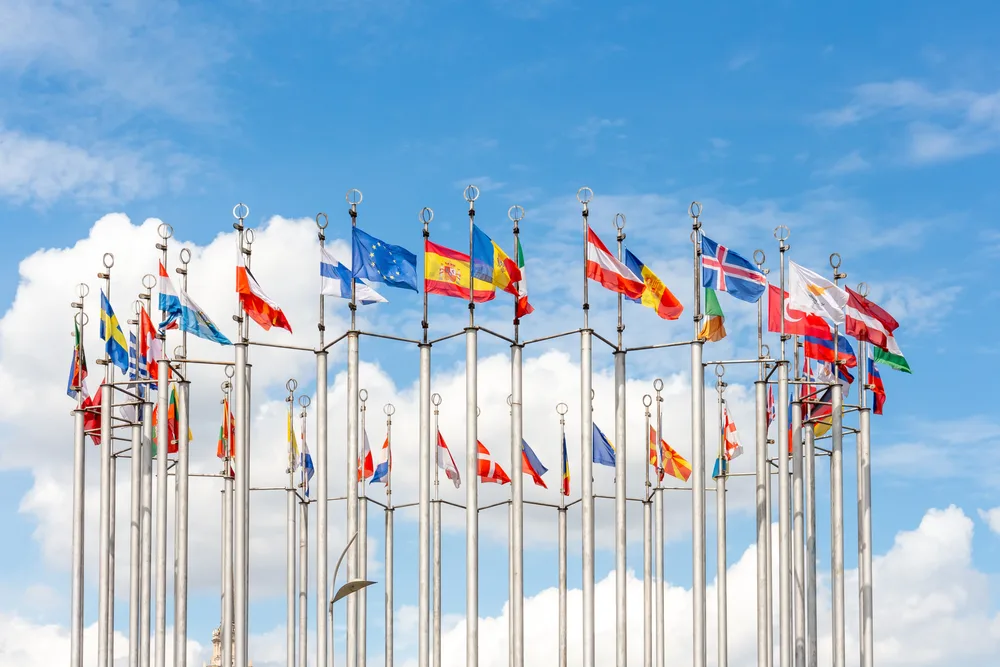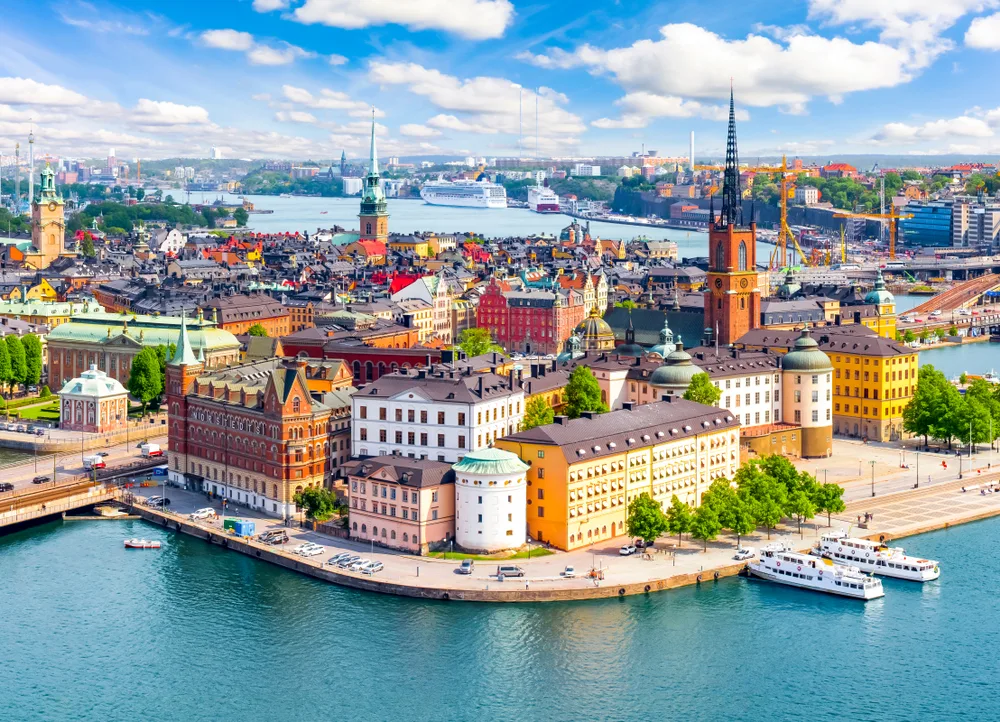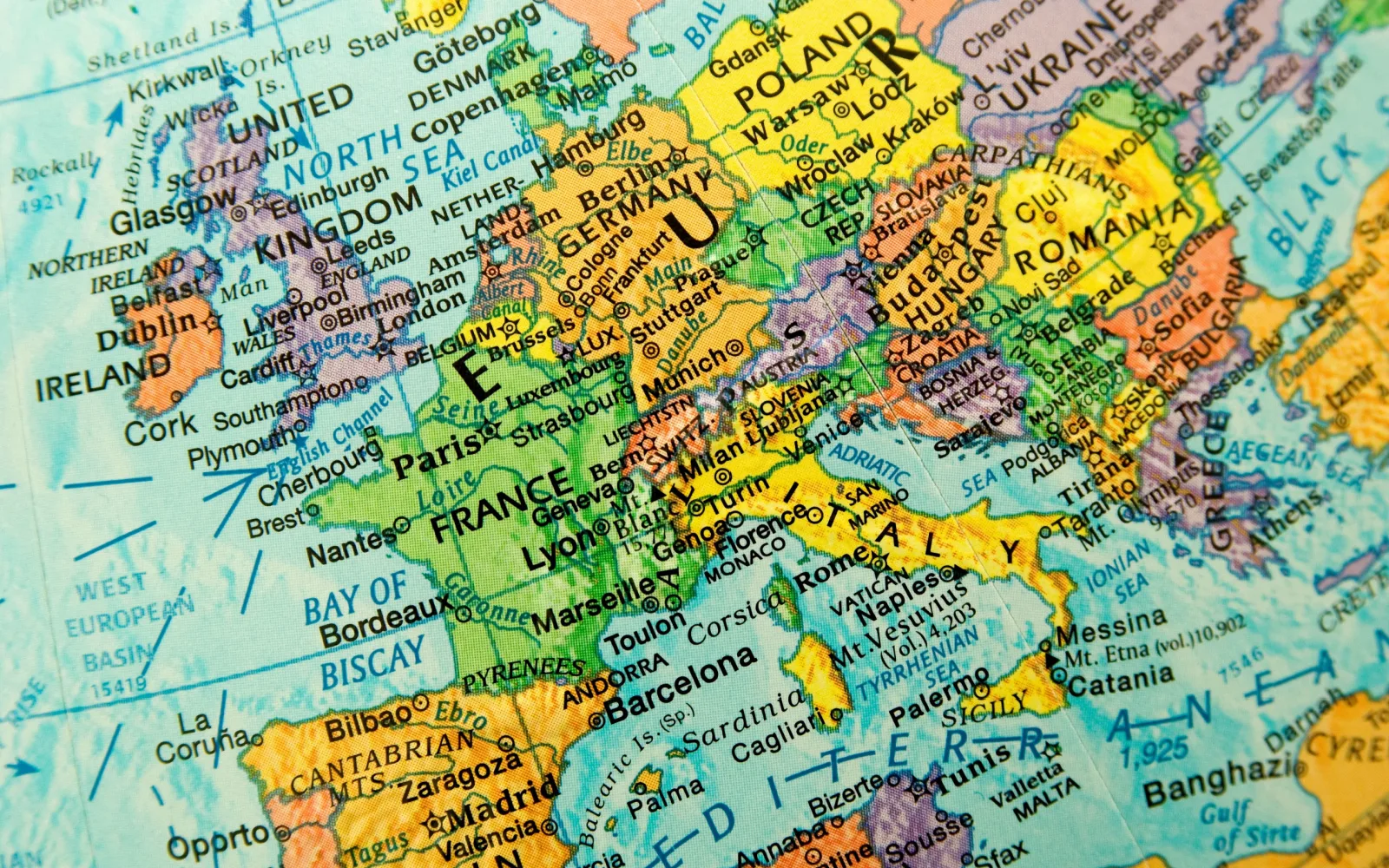Many people consider Europe a homogenous block. Great food, cool castles, primeval forests… it’s all kind of similar, right?
Not so. From the far North to the Mediterranean, the deserts of Spain to the mountains of Romania, Europe is a stunning kaleidoscope of different landscapes, climates, cultures, and architecture.
In this piece, we’re going to zero in on one of Europe’s most popular travel destinations, the Northwestern quadrant. We’ll take a look at the biggest countries and cities, the main geographic points of interest, the people, and more.
What Is Northwestern Europe?

Bayhu19/Shutterstock
The first question that leaps to mind when people hear the moniker “Northwestern Europe” is… what is that?
Sure, there’s the obvious conclusion that it’s the Northwestern part of Europe, but what does that mean?
Most people haven’t heard the term in the news and don’t typically see it on travel sites, and tourists don’t usually come home reporting what a great time they had in “Northwestern Europe!”
Part of the problem is that as a concept, it is loosely defined and debatable, so you will find different answers from different sources.
However, Northwestern Europe is a concept that stretches back hundreds of years, if not millennia. It encompasses countries and cultures that have had contact with one another for many moons, and therefore share similar characteristics – especially culturally and genetically, which we will discuss in a moment.
For now, suffice it to say that the term Northwestern Europe is usually employed when discussing politics, geography, and biology. Different sources will cite different countries for inclusion, which you should take with a grain of salt.
Let’s consider that now.
Main Countries in Northwestern Europe
The main countries that most agree fall under the heading of Northwestern Europe include the United Kingdom, Ireland, Belgium, Holland or the Netherlands, Luxembourg, Denmark, Norway, Sweden, and Iceland.
Some people put France and Germany in the Northwestern category as well, while others point out that geographically and culturally, only parts of these countries fall into it.
Similarly, Finland is disputed because it is too far East. Austria, Belgium, and Switzerland are culturally similar to the agreed-upon countries in Northwestern Europe, and while some argue they belong, others say they are too far away.
Again, it is a matter of debate. Where necessary to create a definition – as with academic studies or climate change reports – those helming the studies/reports will usually offer a specific definition. For the purposes of the traveler, it doesn’t really matter.
The Schengen Area
What might matter to the traveler is which of these countries are part of the Schengen Agreement. This is a pact between 27 of Europe’s 50 or so countries allowing citizens and tourists to move across borders in these countries without documentation checks.
Note that the Schengen Area is not the same as the European Union, although the latter also has 27 member countries and there exists a lot of overlap.
Before making assumptions, always check your travel plans against government requirements. The UK and Ireland are the only countries from Northwestern Europe that most agree do not belong to the Schengen Area.
Read Next: Why the Shoulder Seasons Are the Best Times to Go to Europe
Major Cities in Northwestern Europe

Oleksiy Mark/Shutterstock
Among the biggest cities in Northwestern Europe are, in no particular order:
- Stockholm, Sweden
- Copenhagen, Denmark
- Helsinki, Finland
- Oslo, Norway
- Berlin, Germany
- Paris, France
- London, UK
- Dublin, Ireland
- Reykjavik, Iceland
A Genetic and Cultural Definition
“Northwestern Europeans are represented by people from as far west as Ireland, as far north as Norway, as far east as Finland, and as far south as France,” says 23andMe. “These countries rim the North and Baltic Seas, and have been connected throughout much of history by those waters.”
As such, its people have been connected by those waters as well, so there is a lot of similarity between the countries in Northwestern Europe. People tend to have a Nordic look if their roots trace back a ways, with similar traditions regarding holidays, agriculture, and so forth.
“It is an area widely influenced historically by various cultures, such as the Gothic, Celtic and Roman,” adds ADNTRO. “Due to the relatively flat terrain, thanks to the basins of large rivers such as the Rhine, the Elbe and the Seine, the people of these communities have tended to remain on these lands for several millennia. Because of this, among other factors, there is a high genetic affinity between the populations of northwestern Europe.”
The Protestant Reformation: A Lasting Movement
Northwestern Europe was also the birthplace of Protestantism, which according to Encyclopedia Brittanica is a “Christian religious movement that began in northern Europe in the early 16th century as a reaction to medieval Roman Catholic doctrines and practices.”
Protestantism is also known as the Reformation, and quickly spread from Germany where it began as a result of the writings of Martin Luther to nearby Switzerland, Holland, the United Kingdom, and beyond.
Today, its religious practices are still informed by these traditions. According to Pew Research, “2The European countries with the largest shares of Catholics are mostly located in southern and central Europe.”
Naturally, all of these countries are enriched by immigrant traditions and bloodlines as well, a practice which also stretches back thousands of years – just not from countries quite as far away.
Today, there are plenty of Jewish, Muslim, and other religious adherents in Northwestern Europe as well.
Major Geographic Features of Northwestern Europe

Nikolay Zaborskikh/Shutterstock
Whether you’re just curious or are planning outdoor adventures, it’s useful to understand the major geographic features of Northwestern Europe as well. These include oceans and seas, lakes and rivers, areas of elevation, and deserts and plains.
Oceans and Seas
In Northwestern Europe, you’ll find the following oceans and seas:
- Baltic Sea
- North Sea
- Norwegian Sea
- North Atlantic Ocean
These provide the main boundaries of Northwestern Europe on the top and west. The boundaries along the bottom are inland and defined geopolitically by the location of other countries.
Elevation
Elevation in Northwestern Europe varies considerably. It has high peaks and low fens, ranging from 6,184 feet for Puy de Sancy, while a quarter of the Netherlands lies below sea level.
Unfortunately, this makes climate change a serious danger to the Netherlands.
“Just how many meters of rise the Netherlands can deal with depends on the time it has to prepare, but it is in low to mid-single digits,” says Politico. “According to the Dutch government, current defenses are adequate up to 2050. Improving them is slow work: The last 30 years of flood defense works in the Netherlands allowed it to deal with just 40 more centimeters of sea level rise.”
Mountains
“The Northwest Europe category is a very random grouping of mountains. It is a large area that includes everything north of the Alps and the Pyrenees,” explains Peakbagger. “When it comes to mountain ranges, the main unifying terrain characteristic of this area is low, rolling hills with very few areas of real mountains. Elevations never rise above 2000 meters, and in most of the area hills above 1000 meters are rare.”
If you are, therefore, a mountain climber, you likely want to stick to Eastern Europe. The tallest mountains can be found in the Caucasus Range in Russia, and make for a much more serious challenge for hardcore outdoors types.
Major Lakes and Rivers
The main rivers and lakes include:
- The Rhine River, which flows through Switzerland, Austria, Germany, France, the Netherlands, and Liechtenstein
- The Loire River, which is confined to France but flows through much of the country
- The Thames River, which is similarly confined to a single country: England
- Lake Vänern in Sweden
- The Meuse River, which travels through the countries of France, Luxembourg, Belgium, Germany, and the Netherlands.
- Lake Saimaa in Finland
- The Severn River, which is longer than the Thames and forms a border between England and Wales
As in other parts of Europe (and indeed across the world), each of these makes for a great holiday destination. Riverside cities are beautiful, while boat cruises are a great way to celebrate family time or snag a little romance.
Deserts and Plains
The main plain in Northwestern Europe is called the “North European Plain.” According to National Geographic, it “extends from the southern United Kingdom east to Russia. It includes parts of France, Belgium, the Netherlands, Germany, Denmark, Poland, the Baltic states (Estonia, Latvia, and Lithuania), and Belarus.”
Some of it is underwater, given that the UK is separated by a channel from the rest of Europe. That makes sense, since “Most of the Great European Plain lies below 152 meters (500 feet) in elevation.”
The only true desert in Europe is in Spain, so Northwestern Europe does not technically have any. However, the tundra is considered a type of desert due to its low precipitation. You can find tundra climates in Iceland, Sweden, and Norway.
Frequently Asked Questions

Mistervlad/Shutterstock
Here are some more common questions we get about Northwestern Europe:
Are the countries of Northwestern Europe similar politically?
For the most part, Northwestern countries share similar political views. They tend to be left-leaning and vote similarly in the EU and United Nations.
One area of major difference is between the UK and the European Union, from which it departed in 2020. It no longer shares political and economic ties like it did during its membership. But aside from using pounds rather than euros in Britain, this doesn’t make much difference to anyone who doesn’t live there.
Which are the best cities in Northwestern Europe?
While any “best of” list can of course be contended, we believe the biggest cities in Northwestern Europe are all worth a look. However, the most popular cities to visit continually include Paris, Copenhagen, London, and Ireland.
How should I begin planning for a trip to Northwestern Europe?
Planning an international trip is daunting. First, you’ll want to pick your countries, then the time of year. From there, consider the seasonally appropriate activities, book lodging nearby, and plan any travel between destinations. While it might not be easy, it’s pretty simple – and it sure is worth it.
Plan Your Trip to Northwestern Europe Today
Ready to take a trip to Northwestern Europe? You have so many options, from France to the Netherlands and beyond, that it might feel hard to choose at first.
Or perhaps you want to visit multiple countries in the area, which is easier than visiting those in other quadrants of Europe and therefore a good way to make the most of expensive airfare from North America.
Either way, we hope this has given you a better idea of what to expect from this beautiful corner of the globe, so start planning today!



